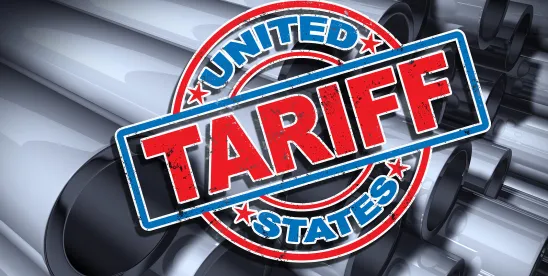The tariff dance continues, as the new administration on Feb. 10 imposed 25 percent tariffs on all steel and aluminum imports for national security purposes under Section 232, effective March 12, 2025. Although the detailed annexes of products subject to the tariffs were not immediately published on the White House website, they should be published soon in the Federal Register.
The proclamation states, among other things, that (i) a product inclusion process for derivative steel products will be established 90 days after the date of the proclamation, (ii) the product exclusion process will be revoked and no renewals or additional exclusion requests will be permitted (iii) classification of imported steel and derivative steel products will be a Customs and Border Protection priority and maximum penalties apply if importers misclassify products to evade tariffs, and (iv) duty drawbacks do not apply to these tariffs.
This action mirrors the tariffs initially imposed in January 2018 for national security reasons. However, during that period, certain exemptions were granted to key trading partners. This new proclamation reinstates the tariffs without exception or exemptions, signaling a renewed focus on protecting domestic steel and aluminum industries.
Far-Reaching Implications
The implications of these tariffs are far-reaching for U.S. businesses, particularly those in industries that rely on imported steel and aluminum for manufacturing. Companies in sectors such as automotive, construction, and manufacturing will face increased costs, potentially leading to higher prices for consumers and reduced competitiveness in global markets. U.S. businesses that rely on these materials for production could experience disruptions to supply chains and a push for diversification of sourcing to mitigate the impact of these tariffs.
Moreover, a Feb. 7, 2025, Executive Order again allows packages from China to qualify as duty-free under the de minimis program until “adequate systems are in place.” This action reverses a Feb. 1 Executive Order and applies to the program that handles millions of low-value shipments daily. The Executive Order’s instruction ”would require mail from China to go through the ‘formal entry’ process, rather than the less-burdensome informal option.”
The action imposing 10 percent tariffs on China on Feb. 1 also prohibited de minimis treatment for any shipments from China worth $800 or less. Similarly, the U.S. Postal Service announced a prohibition on all packages from China on Feb. 4 when the tariffs became effective, only to reverse the position the next morning.
According to media reports, additional tariffs are expected on semiconductors, pharmaceuticals, and other industries, as well as further reciprocal tariffs against China after imposing tariffs on U.S. goods in response to the Feb. 1 action. Trading partners, including the European Union and Canada, are expected to impose reciprocal tariffs against the latest U.S. steel and aluminum tariffs, based on media reports.





 />i
/>i
